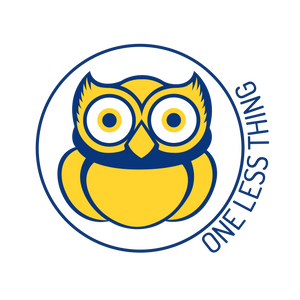If you've taught Ag for any period of time you certainly are over deer season long before your students are finished talking about it. Instead of fighting that paleo wave of outdoormanship focus some of your time to wildlife management to make your students better and safer hunters. Plus, with these ideas you can take on most of these without having a deer present. Which can be a plus in many situations.
1. Build A Model Deer stand
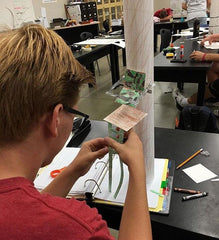
I'm sure your students have never considered the components of a deer stand much less the ones the provide a safe platform to hunt from or which components are for safety and which ones are for convenience. Instead of lecturing about safety features display a few different models of deer stands and point out the safety features and let their creativity do the rest.
2. Deer Stand Safety

The first activity can even follow up this activity. Depending on whether you personally have access to a deer stand, can call someone in locally to demonstrate, or you can schedule a visit from a Hunter Safety Staff Member from your Department of Natural Resources any of these will help students understand the importance and dangers of deer stands.
3. Create A Food Plot

Whether you have deer or any other type of wildlife near your school it is still worthwhile to create a food plot. Not only can you discuss what type of wildlife that can be found in your area, you can then work to plant beneficial crops that will encourage those animals to visit the site. You may even choose to plant several different types of wildlife plants and see which one attracts the most or diverse number of animals.
4. Construction Paper Antlers
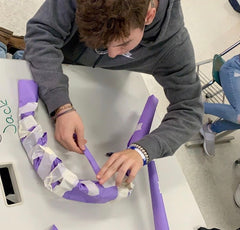
This activity works great when you are in a pinch and don't have access to actual antlers. Cover the principles around antlers and have your students make their own set. Focus on realism so that the rack sizes don't get out of hand and you'll understand why in the next activity.
5. Boone & Crockett Scoring of Antlers

This activity builds on what you discussed with your students about antler anatomy, symmetry, and deer health, but really it's the fun part to see who has the largest set of antlers. Here's a link to the Boone & Crockett Scoring Guide as a useful reference. Students can always use more practice measuring but there are certain elements of design that go into a quality set of paper deer antlers. Guide them through the construction process and see what your students are capable of.
6. Create A European Mount
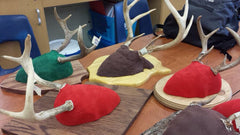
There are really two ways you can complete this activity. You can have your students bring in the skull with antlers attached or they can use their paper antlers they made in class. The European Mount is essentially a wooden plaque with just the skull and antlers attached. No taxidermy required. So either this class or your woodworking class can make wooden plaques to mount your antlers or you can get cardboard and make your own.

Or, you can take the next step and bring in a recently harvested deer skull and go through the cleaning process yourself (as a class of course). Here's a guide to cleaning the skull. Caution: This isn't for the faint of heart, but if you have lab safety procedures in place and your students can follow instructions then there's a chance you can make this work.
7. Dress And Render A Deer
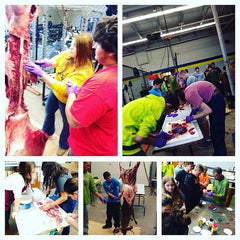
Speaking of activities for the faint of heart, this one does take some skill, equipment, and intestinal fortitude. Some say dressing and processing a deer is a dying art. I don't know that I'd go that far but it is a less common skill that it used to be decades ago, but it is a skill that needs to be taught to the next generation. While a metal stand with gambrels is preferable, your students can do this on the ground or in the back of a truck. Wherever you decide to take this on prepare for a mess and how to dispose of it. Here's the Penn State Pocket Guide to Dressing a Deer. Even if you know, it's always good to brush up on your technique.
This should be a great start to your Wildlife Management class for fall. Here's a link to the Build Your Own Antlers post to refresh your knowledge. If you finish these activities and your students are chomping at the bit for more than take a look at our QDMA Deer Management Curriculum and see another great set of activities plus lesson plans for your students.
